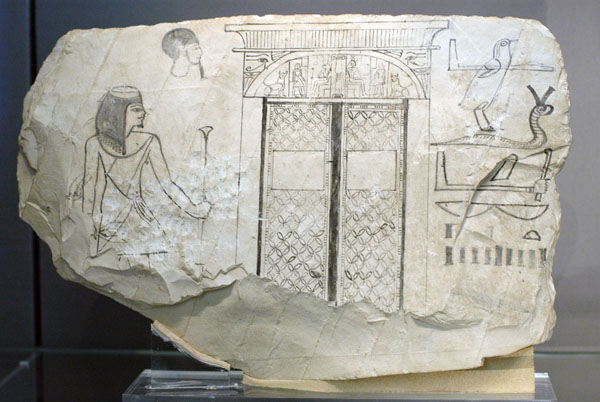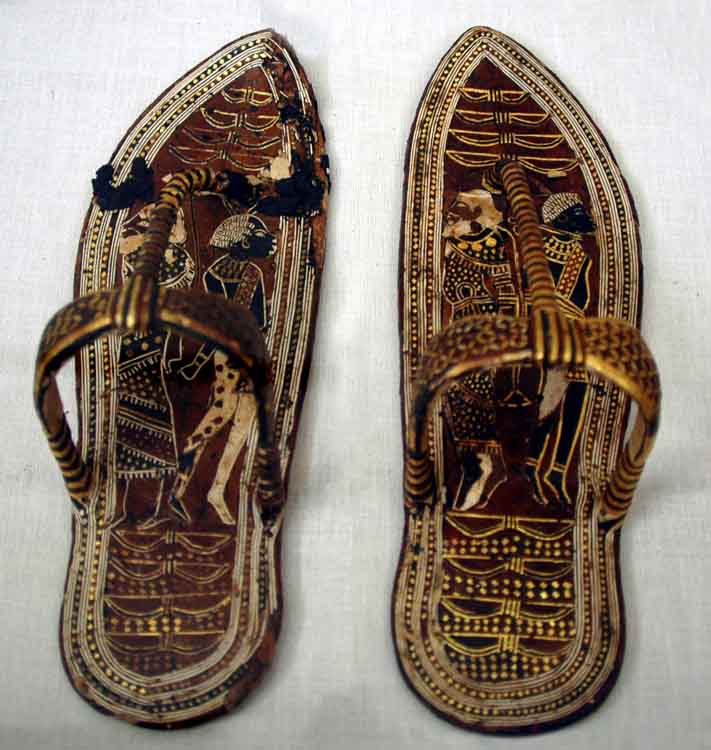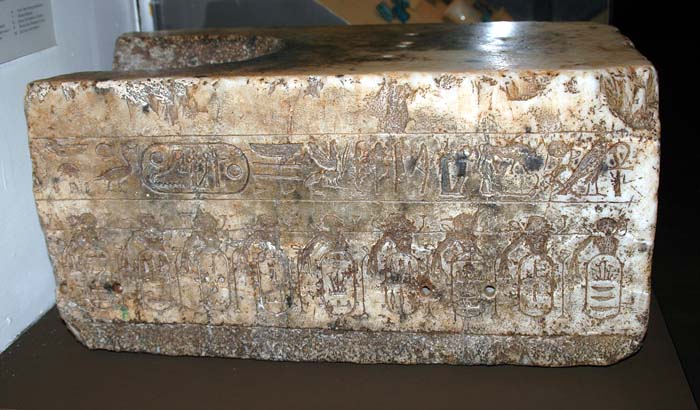
Ostracon, limestone flake, from Deir el Medina and dating to the 19th Dynasty. The Ostracon seem to have been used to explore a number of themes by the artist. The most prominent design is of a shine door and a standing official (denoted by the staff of office held in his left hand) - originally the Ostracon would have been larger and had a more complete design. The hieroglyphs say "nine bows" which is a standard formula to represent the classic enemies of Ancient Egypt.

- The Nine Bows
- This is an ancient term that collectively referred to the enemies of Ancient Egypt. The name could originate from the use of Bows by their enemies and the ritual breaking of bows of defeated foes - but the actual reason is not known. The actual enemies that this refers could be adjusted to reflect the current contact with neighbours and their relations with them - we can include Asiatic, Sand Dwellers, Nubians and even lower and upper Egyptians.
- The Nine Bows were often represented a number of arrows (not always nine) and this design was used to decorate some royal furniture and thrones. On monuments the Nine Bows could also be represented as rows of bound captives. The Nine Bows, surmounted with a Jackal, was also the 'seal' of the Valley of the Kings.


- Tutankhamun's sandals have a representation
of the Nine Bows and captives. The block, a base for a statue of Rameses II,
has the traditional enemies of Egypt represented on the sides of the block -
personified as bound and kneeling captives. They were therefore symbolically
beneath the feet of the king and under his control. From the front of the block
they are:
- 1. Hanuenbu (northernmost foreigners)
2. Shat (a Land in Nubia)
3. Tashema (Upper Egypt, the south land)
4. Sekhet-lamu (the people of the desert oases)
5. Ta-Mehu (Lower Egypt, the Delta)
6. Pedjet Shut (foreign barbarians)
7. Tehenu (Libyans)
8. Iuntyw Seti (natives of Nubia)
9. Mentiu Setet (Nomads of Asia)
10. Khet Hesy (Hittites)